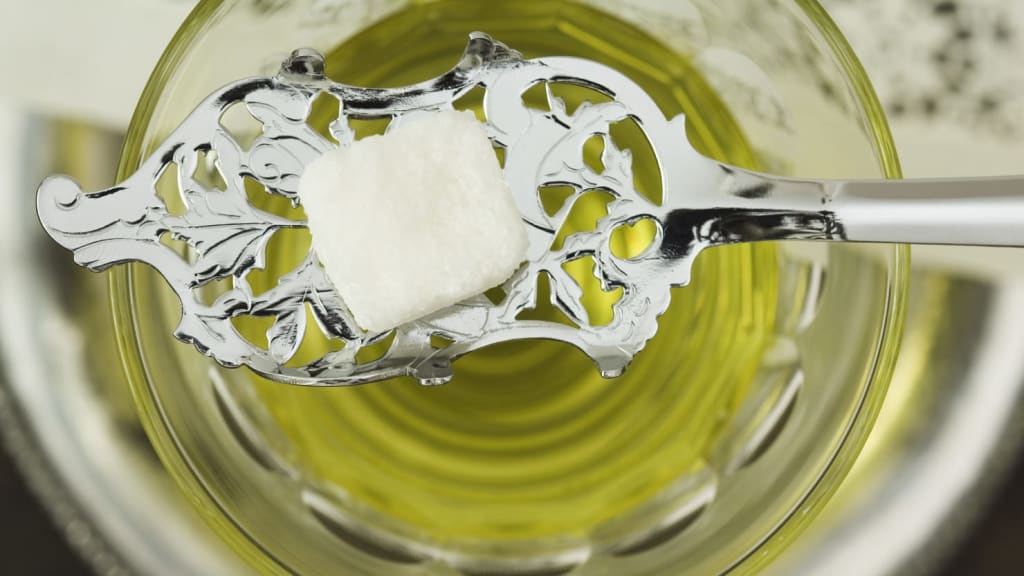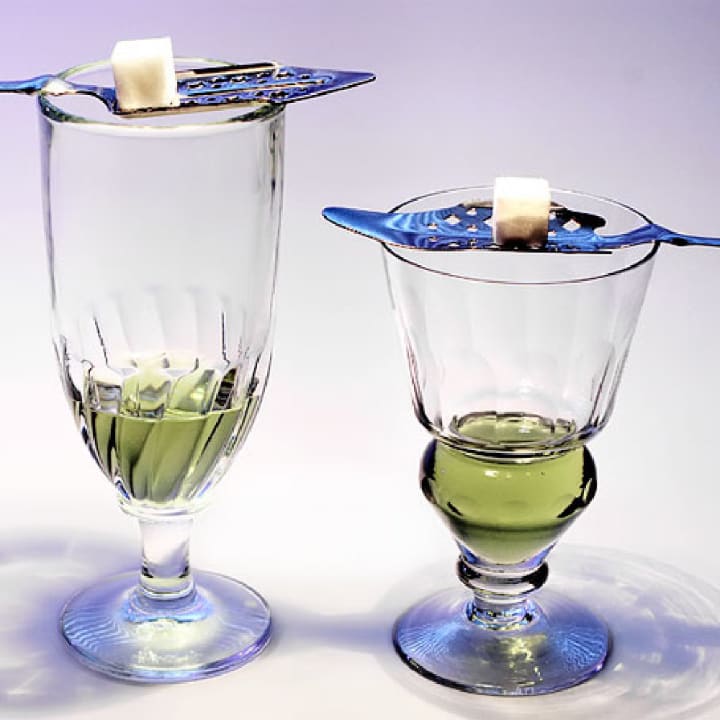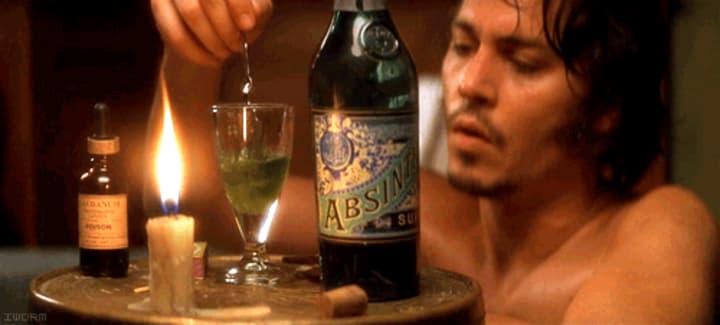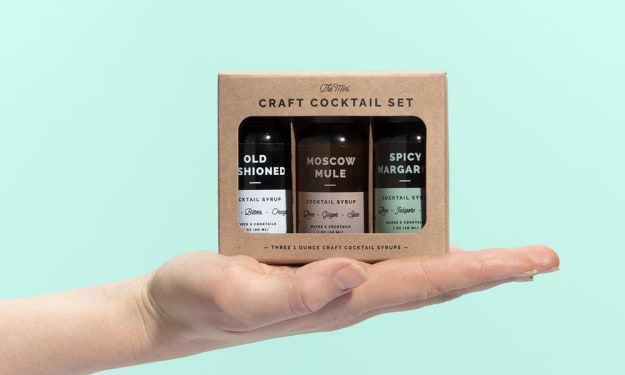How to Make Absinthe at Home
If you want to meet the Green Fairy, you're going to need to learn how to make absinthe at home.

Absinthe is one of the very few liquors that remains as mysterious and edgy as ever. First allegedly used as a health tonic in France during the late 17th century, absinthe has gained an incredibly striking reputation for being one of the only liquors in the world to have hallucinogenic properties.
Not all kinds of absinthe are hallucinogenic, and it's definitely an acquired taste. However, homemade absinthe is bangin' and a serious status symbol. If you want to learn how to make absinthe at home, this article will help guide you to the absinthe type of your choice.
Before we start, we need to talk about absinthe.

There's no point in learning how to make absinthe at home unless you actually would enjoy the finished product. To fully understand what you're getting into, there's a couple things you should know about absinthe:
- It's very strong. Most absinthe has a strength similar to vodka, rum, or even moonshine. It will knock a lightweight out.
- It has a licorice-anise flavor. Green as it may be, it tastes like black licorice. It's a taste some may hate with a passion, so make sure you know you'll enjoy it first.
- Not all absinthe is hallucinogenic. The ingredient that makes absinthe hallucinogenic is wormwood, that has high concentrations of thujone. Absinthe that's legally distributed in America needs to be devoid of wormwood in order to be sold. Part of the perk of learning how to make absinthe at home is being able to get your hands on the hallucinogenic stuff.
Now that you know all the basics on absinthe, we can talk about how to make it on your own.
You also should be schooled on the history of absinthe.
The history of absinthe is pretty fascinating. Absinthe was first created as a health tonic in the 1700s, and was composed of a variety of different herbs. The tonic was often used as a pain reliever, and since it was a "folk cure," it had a multitude of different recipes. Some even included snails, chickens, and fat in their drinks.
As absinthe continued to evolve, it became mostly known for the "Holy Trinity" of fennel, anise, and wormwood. By the late 1800s, it was both a curative potion and a libation—and there was an overall consensus on the general concept of how to make absinthe.
However, there's something that you should know.

For a very long time, absinthe was illegal throughout Europe. From the early 1900s to the 1920s, almost every company that made absinthe ended up being forcefully shut down due to the hallucinogenic reputation it had.
In a lot of ways, the absinthe prohibition mirrors why marijuana became illegal. Both were smear campaigns, and both offered ample proof that illegalizing substances doesn't work.
Sadly, one of the side effects of absinthe's ban is that no one knows how to make absinthe the traditional way anymore. All the absinthe recipes we have are basically replicated guesses. So, if you're looking for OG absinthe, you probably won't find it.
First, you need to determine which kind of absinthe you want to make.
Absinthe with wormwood, also called hallucinogenic absinthe, is strong and often resides in a legal grey area. However, it's definitely something that will offer a unique experience that will be difficult to replicate.
"Regular" absinthe won't be hallucinogenic, but still will impart a pretty wild flavor and get you buzzed. It's up to you to decide which is right for you, and which is worth pursuing.
If you choose to make hallucinogenic absinthe, you're going to need to shop for supplies.

The hardest part of learning how to make absinthe at home, particularly if you're looking for a hallucinogen, is learning where to find good supplies. Wormwood used for hallucinogenic absinthe will have a compound called thujone, and it goes by the scientific name artemisia absinthium.
Hallucinogenic wormwood is also known as "grand wormwood," and is part of the flavoring profile of quality absinthe. Distillers also will use royal wormwood or petite wormwood for a similar, less dangerous flavor alternative.
Regardless of the thujone levels you want, you will need to get wormwood. While a lot of the supplies that you'll need will be easy to find, this one won't be. It can be hard to find due to legality issues in certain areas, or just because it's hard to find. Ideally, you'll have it fresh.
You will also need anise, fennel, and a hard liquor such as vodka—at the very least.
If you so choose, you can add other herbs to your absinthe for extra flavor or a more heady punch. There are a number of different sites telling you how to make absinthe's unique herbal composition.
For a lot of people, learning how to make absinthe is a process.
Here's the biggest issue with absinthe: it will take a hot minute to actually get a recipe or combination you like. You will need to find a liquor that works well with your palate, a spice mix that tastes good for you, and trust me, there will be a lot of bad batches before you find the right one.
Generally speaking, the easiest way to make absinthe is to make it as a liquor infusion.

Most people will tell you how to make absinthe the "easy" way: it's an infusion. You simply add one third cup of the herbal mix you enjoy to 750 mL of liquor. Then, you store it in a warm, dark place for anywhere from two weeks to two months.
After your storage period is up, you strain the herbs out and you're left with a brown, bitter liquid. You then will have to distill it by boiling away the bitterness and the alcohol.
Once that's done, you'll have to add macerate, which is a secondary infusion done with petite wormwood and vodka. This infusion only lasts a couple of days, and is mixed with the distilled absinthe.
But wait! There's more you need to do.
The final step of learning how to make absinthe at home is figuring out how much absinthe distillate, macerate, and water you want to mix.
This is something you will have to figure out via taste-testing. Trust us when we say that you will taste some very bitter or strange concoctions during this phase. That's why many people prefer to just grab a bottle of absinthe at a liquor store.
Sadly, there's a lot of guesswork when it comes to trying to figure out how to make absinthe. Some might argue that that's the "traditional way," but that honestly isn't too fun to deal with.
A better way to avoid all the wasted ingredients is to just get a kit that has pre-measured absinthe ingredients in it, a step-by-step guide, and all the tools you need to make a batch. The Absinthe Making Kit from Uncommon Goods, for example, has a pretty solid track record.
No matter what route you choose to use while figuring out how to make absinthe at home, just make sure to serve it well.
The ideal way to enjoy absinthe is to have it served using the sugar cube method, which involves dissolving a sugar cube into the mixture using a water drip.
However, it's also pretty good with some Brut Champagne. (I've tried it. It's one of the best Champagne cocktails you'll ever taste!)
Either way, you'll love making it on your own—and enjoying the fruits of your labor.
About the Creator
Sasha Konikovo
Born in the Ukraine and currently a citizen of New York City, Sasha Konikovo has become obsessed with makeup, fashion, and anything that keeps her svelte figure looking sharp. She hopes to marry a billionaire and have a lifestyle like Paris Hilton soon enough.






Comments
There are no comments for this story
Be the first to respond and start the conversation.